



Featured image: Leo Selvaggio’s Urme Surveillance.
“(I loved the FUSE opening at the Vancouver Gallery)
You couldn’t tell the ISEA work from the art!”
– paraphrased from a tweet noted by Paul Catanese
That which disrupts is fated to make its own niche, called a foothold.
I’m late, with few excuses other than adjusting to my new role at American University Sharjah and needing to really process this event, as it presented challenges, old and new. The reflection is particularly useful in that the scope of Kate Armstrong, Malcolm Levy, et al’s vision this year in Vancouver was so grand that it is near impossible to write a fully inclusive perspective on the festival. Therefore, I will limit myself to some specific ruminations, cover highlights, and draw an epistemic vector moving forward.
What ‘clicked’ for me through the aforementioned tweet was that not only has technological art been accepted by a mainstream vis-à-vis the FUSE exhibition, denoting an aesthetic sophistication, but also an alignment with an more mainstream art-historical sensibility. Perhaps this comes from awareness of artists like the Postinternets, of which Levy is considered; have for the conventional art world while exploring technological forms. This has not always been the case, but perhaps artists like Levy, Olson, Gannis and others have answered the gauntlet thrown by Claire Bishop in the 50th Anniversary issue of Artforum, where Bishop called for the disavowl of digital art, and by association, electronic art. This results in a disruption piercing the perceived ‘wall’ between technological arts and art history/the ‘art world’. As I mentioned, because of the size, I will limit myself to highlights consisting of notable exhibitions, keynotes, and selected works of art.
Vancouver is a city steeped in media art history. As Sara Diamond laid out so well in her keynote, Vancouver media arts encompassed feminism, alteriority, and telematics. Part of my familiarity with that history includes the activities at artist-run spaces like Western Front and Open Space, with artist like Hank Bull, Robert Adrian, Bill Bartlett, Robin Oppenheim and others trailblazing networked art through teletype, slow scan television, and satellite performance. ISEA showed that this tradition is alive and well in the Canadian West. One other remarkable Canadian (perhaps one could say American-Canadian) keynote was Brian Massumi’s talk on Affect. Brian mentioned that despite the fact that he has written extensively about topics including affect, he felt that he had not addressed the topic directly to the point that he was satisfied. Massumi integrated ideas echoing from Parables for the Virtual to today in his signature propositional style, and it is my hope that I will see this in print.
The first major site to visit was the Quoting the Quotidian opening exhibition at Wil Aballe Art Projects (WAAP). The concept was the celebration of the everyday, the found, and the appropriated. Of course, a quick go-to would be Marisa Olson’s Time Capsule series of gold-painted media artifacts. Of the artists, the most lingering was Nicolas Sassoon’s moire GIF work, of which I was somewhat familiar. The ongoing point of interest I have with the GIF in the gallery is that its venerable age has elevated the format to near-filmic status. The gallery was small, which was surprising for an opening event, and was attended by most of the ISEA board, including Peter Anders, Win Van der Plas, and Paul Catanese…

Also early in the festival, I attended AM/CB’s Hakanai installation/performance. Hakanai is a cubic projection mapping work that responds to the dancer in using conceits of draped grids, Ikeda-like geometric glitches. While the performance itself was amazing at a technical and aesthetic level, I felt that the piece itself was constrained by its technical conceits, as I never felt that there was a transcendent moment in which I felt like the techne ‘disappeared’ despite the magic that was happening. For all the situations proffered, wind, rain, etc. I never stopped thinking of how they did that, regardless of how virtuosic the work was.
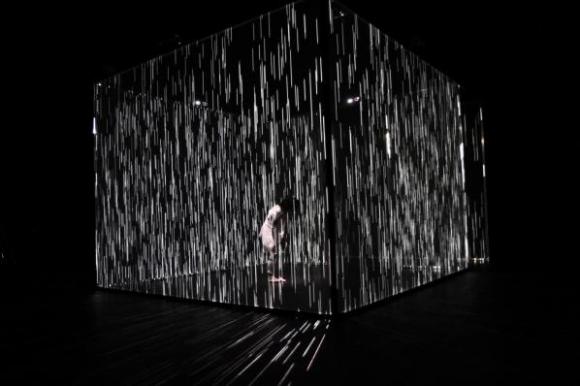
Probably the most impressive feat pulled off by the ISEA organizing group was the FUSE exhibition. This for me was likely the most impressive event, held at the prestigious Vancouver Gallery. The gala was well attended, and I was very surprised to be the subject of Facebook paparazzi of which I had no acquaintance (red carpet, indeed…). The event spanned the second floor rotunda onto the penthouse-like third floor. One of the key aspects of the show was Armstrong and Levy’s concept of dealing with electronic art and materialism, and emergent canonical forms like Glitch, with representatives of the form being works by Philip Galanter and Jon Cates. Levy’s idea for tying the exhibition to emerging media art histories clearly refers to the rich art historical space in Vancouver, as echoed by the opening gala at VIVO and trips to the legendary Western Front artist-run space. Admitting a personal bias, it was good to see Scott Kildall’s EquityBot ultra-slick documentary (corporate?) display describing his experiments using bots to execute automatic trading on the stock market based on affective reactions in the Twitterverse. Also surprising was Paula Gaetano Adi and Gustavo Crembil’s TZ’IJK, a blind, deaf, and speechless robot made from mud.
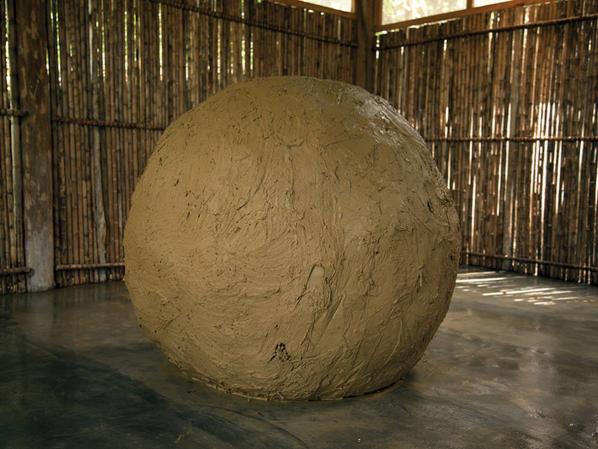
At the Vancouver Gallery, there were a number of great works, foremost amongst them were Erin Manning and Nathaniel Stern’s The Smell of Red and Judith Doyle’s Crow Panel. Red was an intense installation that expanded on the ideas of embodied knowledge of the Senselab group at Concordia University, in which there was a sandy beach enervated with cinnamon. Rising above in areas were vortex chambers designed by his working group at UW Milwaukee that simulated dust devils over the cinnamon landscape. In the center, there were edibles that you had to enter into the installation, and I would up smelling like cinnamon for two days. Doyle’s piece, Crow Panel was a playful take on the Kinect point cloud genre in which apparitions of people, birds and the forest floor are mixed with live depth images of a rough doppelganger of data interacted with us as we entered the structured light field. However it was not so directly representative as other pieces using the technology, and it remained lyrical and fun.
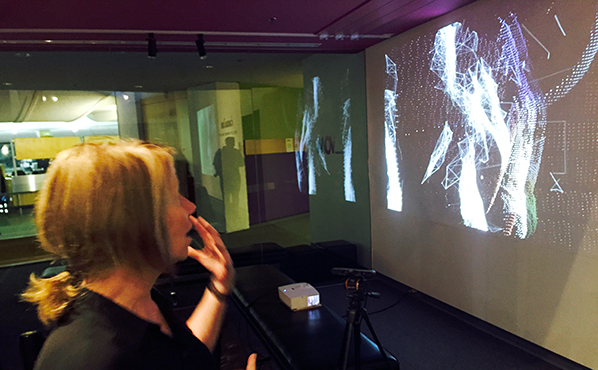
After the Vancouver Gallery exhibition, I decided to forego the Mutek event and venture out to the LoCoMoTo happening, entitled Oscillations, held in Charleson Park. It consisted of several performance/sound/projection pieces in natural settings by Merlyn Chipman, Jeremy Inkel, Wynne Palmer, Rob Scharein, Laura Lee Coles, and many others that integrate themselves into natural settings. Of note was Send and Receive, by Mirae Rosner and prOphecy sun, an idiosyncratic performance in which they worked with huge siver inflatable forms, reminding me of giant silver tailed lamas of Indian folklore against the Vancouver skyline, creating a surreal mise en scene.
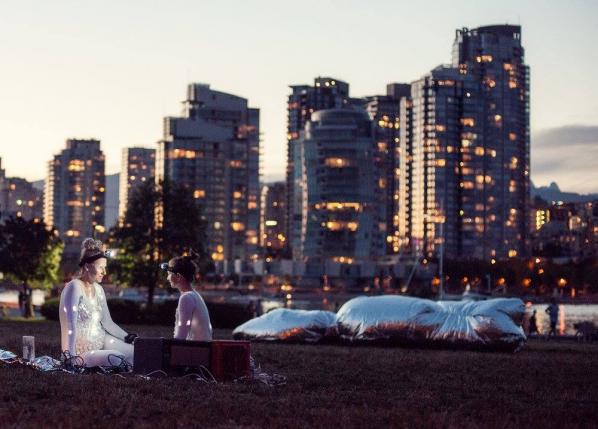
Back on the SFU campus, my favorite piece in the festival was Polak and Van Bekkum’s piece, The Mailman’s Bag. This impressive piece is constructed from several directions; a GPS-enabled sound recorder is placed in a mailman’s bag, giving the bag the capacity of hearing. The GPS data is then used to drive a Google Street View animation that extrudes into pseudo-3D neighborhoods with the sound of the bag in the background. The neighborhoods morph and undulate as the eye moves through the space, creating an effect somewhere between a cheery Inception, Dark City, or Scanner Darkly. The Baudrillardian hyperreal becomes evident here, and becomes disturbing in its distortion of the mediated real overlaid upon surveilling data politics.
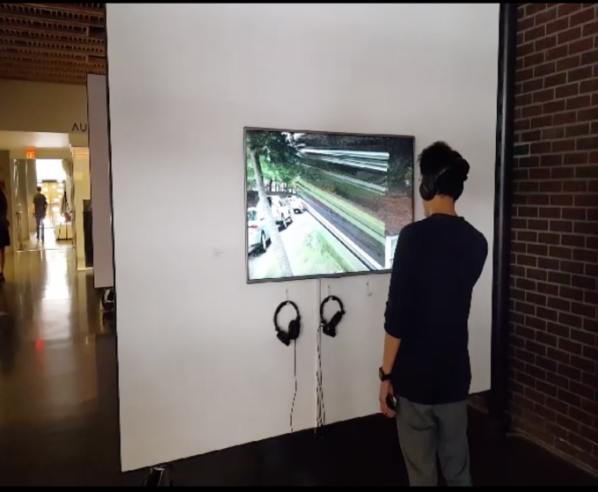
The main question that I have been pondering in writing this review is based on the beginning quote – what happens when what has been considered genre art becomes transparent? This has been a conversation that has been happening since the inclusion of New Media in numerous major exhibitions since the 1990’s. Although we can go back at least to Dada to argue that technologically-enabled work has been making incursions into the art-historical dialogue, into the 21st Century, there has been a debate about New Media, Post-Media, and postinternet art and its relation to the Contemporary. My polemic about the transparency of the ISEA work in the museum relates to where works comply with artworld hegemony, whether by accident or by strategic targeting. It’s a serious question where postinternet works like Olson’s, which refer to media, are ‘electronic’ in nature…
But then, where does this leave works that utilize traditional media but employ electronic processes or production methods leave us? In short, to imply that a work shown at a venue like ISEA should be “media” art brings us to the old conundrum of work that is not as legible to larger audiences. On the other hand, purism/formalism has often led to ghettoization in electronic arts, so this is an ongoing discussion. For now, it appears that there are many hybrid discourses that are legible as art in contemporary venues.
ISEA 2015 is likely one of the grander editions of this festival that I have attended in recent years. Congratulations to the Vancouver team for an excellent job, and the participating organizations for supporting such a grand vision. It is no small feat that the team has integrated the festival into so many of the city’s extant cultural spaces, and in a way that is seamless with the sites involved. Next year, ISEA comes to Hong Kong, and it will be interesting how the team there fares.